How Apple’s iOS 14 Release May Affect Your Facebook Ads
Posted on 11/13/2023
Reviewed by Arnt Eriksen updated at 11/16/2023
Introduction
As the world began its descent into chaos at the peak of COVID, Apple dropped a bomb on the Meta Nation. On any iOS 14 device, Facebook, Instagram, and Tiktok marketers would no longer be able to run ads without the permission of the user. Unsurprisingly, iOS 14 Facebook Ads have quickly become one of the hottest discussion topics among marketers all over the world.
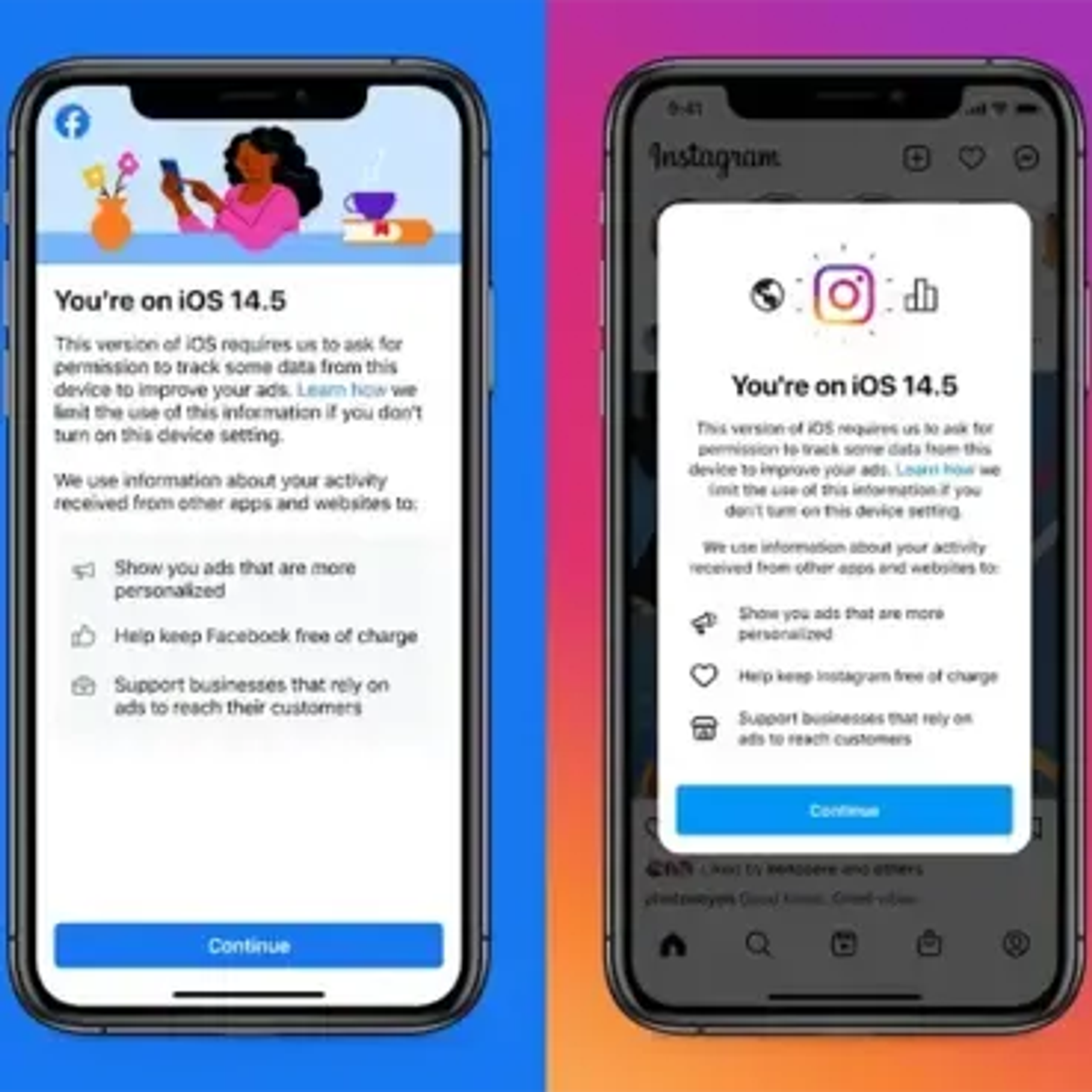
IN THIS ARTICLE YOU WILL LEARN:
The impact the new Apple iOS 14 and 14.5 updates has on your Facebook Ads.
Issues iOS 14 and 14.5 can cause advertisers.
How to adapt your Facebook Ads for the Apple iOS 14 and 14.5 updates.
Apple iOS 14: The Backstory
Even before the move became official, Apple had been vocal about data protection and the privacy for its users. Upon the enactment of the European Union's General Data Protection Regulation, Apple took the hint and launched an embargo on several online platforms and mobile apps.
As a result of the iOS 14 update, the iOS 14 and Facebook Ads manager would no longer be able to perform data tracking. The only exception to this rule is via opt-in pages through which iOS users can authorize an app to track their data.
This move in data protection is miles ahead of that imposed in the United States, which is yet to impose statutes similar to the General Data Protection Regulation.
The legislative environment in the US hardly limits Apple as a company. Apple controls the software and hardware of all Apple users, and it can, by reason of policy, implement strategies like this data protection program via new system updates.
The implication of the iOS 14 update is that on this platform online advertising, data tracking, conversion tracking, and access to third-party data is not as easy or effective as it used to be.
Clearly, the average performance of a Facebook Ad is lower as a result, and Facebook advertisers are more hesitant to invest in the Facebook Ads Manager, the ad spend rate is lower, and Facebook Ads is no longer able to track user behavior to give accurate analytics. Ultimately, this means less revenue for Facebook advertisers and the Meta Nation. In fact, Facebook had projected a 50% decline in ad revenue once the plan came into effect in 2021; they actually recorded a 60% decline when the update came into effect.

Seeing how the new development limits Facebook advertisers, Facebook made significant PR moves to discredit this change. Although these efforts didn’t produce any notable results, Facebook's response was significant enough to get a word or two from Tim Cook, CEO of Apple.
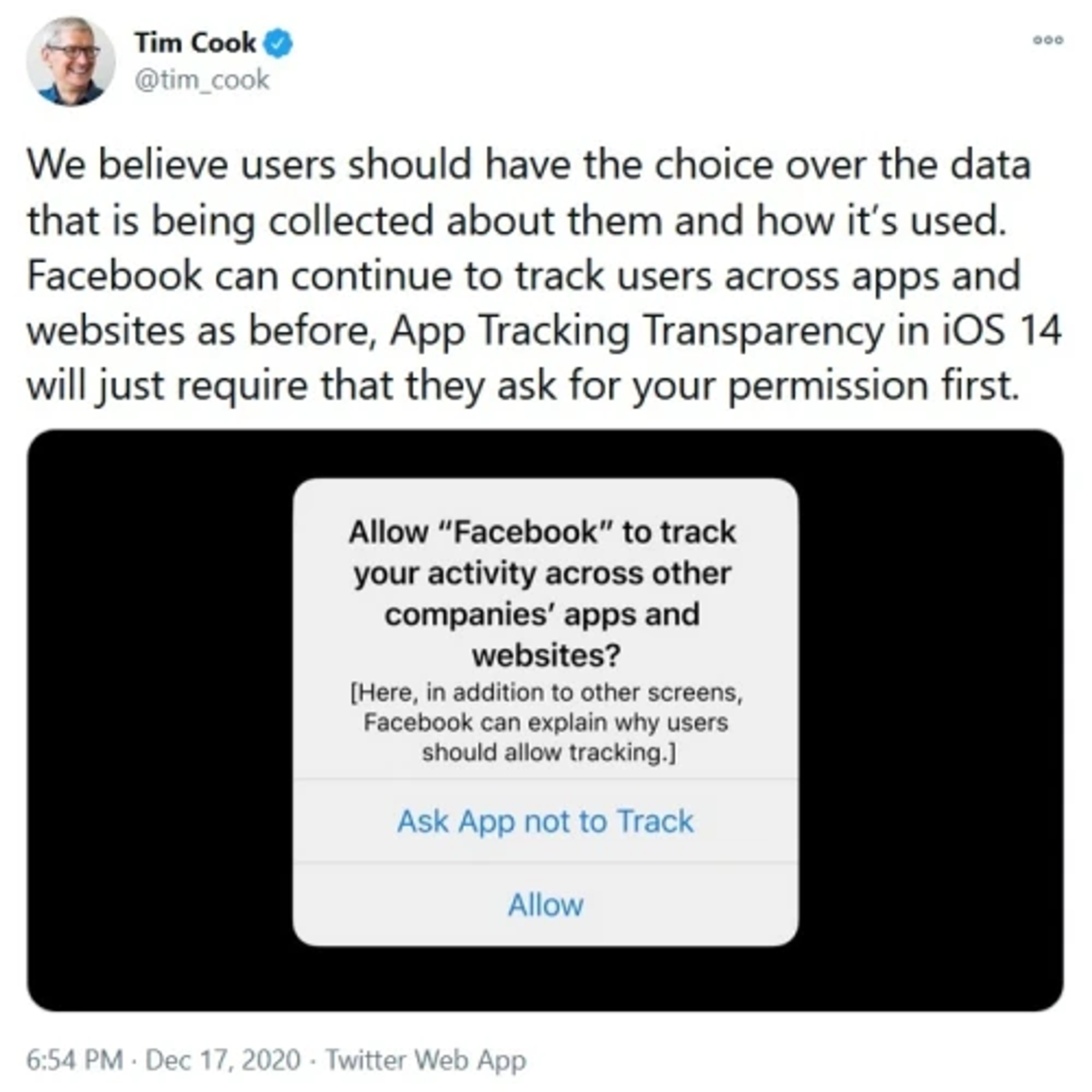
By early 2021, businesses that ran Facebook Ad campaigns had to get ready for huge changes to Facebook Ads imposed by the Apple iOS 14 update. The digital world began to wonder about the Apple iOS update notification popping up at the top of most Ads Managers. Marketers kept asking themselves what it all meant. At this time, the pop-up notification below was the weirdest thing happening on iOS 14.

In early 2021, Apple required all apps in the App Store to implement their App Tracking Transparency framework. This would affect the ability of apps to carry out conversion tracking on iOS 14 users.

The Impact of the Apple iOS 14 Update on Facebook Ads
Apple’s App Tracking Transparency framework limits the information that can be exchanged with third parties, such as Facebook, which significantly impacts ad creation, ad personalization, and performance reporting. The main things impacted by these changes are:
- Facebook Pixel Tracking:
Measures related to additions to carts, purchases, leads, and custom conversions that are tracked by Facebook Pixel are no longer accurate because some people have opted out of tracking. - Audience Building:
iOS devices don’t give us any information on the customer visiting your website. This means that these people won’t be included in the lookalike and remarketing audience. It is possible that we will be able to track part of their engagement, but only time will tell. - Retargeting:
When people with an iOS 14 device visit your website, you won’t be able to show them retargeting ads. - App Installs:
If you have an App you are advertising, App Installs and other App-related conversions won’t be optimized by Facebook for iOS devices. - Ads Optimization:
Ads won’t be optimized as fully as they were before because Pixel doesn’t get enough information from the people who have consented to tracking. - Huge advertisers:
Even the advertising giants, such as Google, YouTube, LinkedIn, SnapChat, Pinterest, and TikTok, are affected.
It is no longer possible to track or optimize actions that are taken by iOS 14 users, but you will still be able to get sales, leads, and actions.
Now let’s look at specific ad objectives that have been affected:
- App Installs when targeting iOS.
- Traffic Ads that are optimized toward Landing Page Views. If you are optimizing toward Link Clicks, your ads will not be affected.
- Catalog sales, if they go via your website. Facebook Shops and Instagram Shopping (where the user stays on the same platform) will still be able to obtain tracking information.
- Conversion Ads that are optimized toward Standard Events or Customer Conversions.
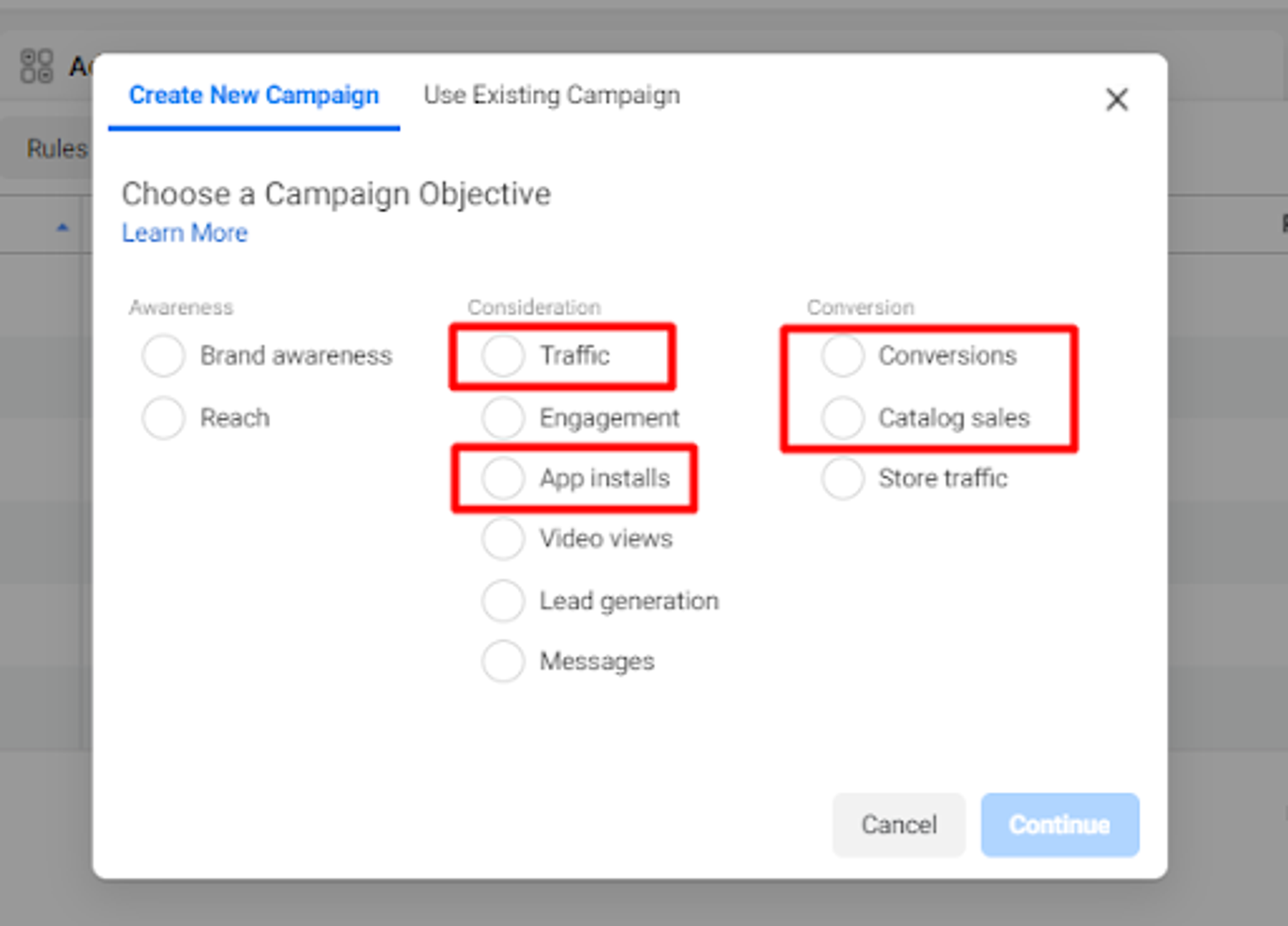
Tracking of any Pixel activity with other objectives is also affected.
Other objectives, such as lead generation, that are tracked on Facebook will still be tracked and reported correctly.
The Main Issues for Advertisers
The reality is that a large number of users did not care whether data collection and tracking were part of each app and, therefore, did not care to disable it. However, given the option, many will be unlikely to grant permission for tracking. It has become easier to say no.
Of course, you are still going to get leads and sales from iOS devices; you just won’t be able to see them all in the Ads Manager reports. As a result, your cost per action may increase.
If you thought that iOS 14 was the only problem we are faced with, then take a look at what we expect in terms of optimization.
- Less conversion events to track and optimize
With iOS 14, Facebook is now scaling back the tracking events to a maximum of eight conversion events per domain. This could represent a challenge for advertisers who operate multiple versions of their website according to their visitors’ country, location, and/or language. - Based on these developments, Facebook will determine the events that seem most relevant to your business. The process cannot be influenced because it is automatic.
In addition, iOS users who choose to opt out of data tracking will only be recorded as one event after they click a Facebook Ad. Such users will also be recorded when they complete a conversion event on the first click without any prompt.
To work around this limitation, Facebook advises that you develop a new Facebook Ad strategy. Through this strategy, you can record the eight conversion events that are most important to your business.
For instance, you could pick your eight events as visit website, purchase item, submit this form, subscribe, and so on. If you make your conversion events into a part of your interaction with the client, then you can track the customer's progress in interacting with the ad or content.
Whatever data you collect from these events can be used in your Aggregated Event Measurement (AEM), conversion tracking, retargeting audiences, optimization, and subsequent improvements to your marketing strategy. - A more practical instance would be using "purchase" as a conversion event for various products. When you sell a dishwasher, a blender, and a washing machine, buying two of the three would amount to two different conversion actions, but you can merge all three items into a single event under "purchase".
This, however, comes with an unintended side effect. If the blender and dishwasher have made better sales than the washing machine, the standard response would be to optimize the product. But having merged the three items into a single event, the events manager will not be able to single out the washing machine. In response to your tracking information, you will either have to optimize all three products, delete the two products from that conversion event, or put the two products under a new event.
Ultimately, the transactional data from your report will not necessarily be affected if you have set the relevant events on your Facebook Ads Manager. Facebook has also chosen to support Facebook campaigns with an events management tool that helps you prioritize the events that are most important to your business. - Delayed Reporting
Real-time reporting is not supported, and data may be delayed by up to 3 days. This will ultimately cause challenges in understanding the purchase consideration cycle of your customers, which may lead to premature decisions on when to pull the plug on ads. - No support for breakdowns
Delivery and action breakdowns, including information based on age, gender, region, and placement, will not be supported. This is a big deal and goes against Facebook’s narrative of creating growth with content targeted at a specific group of people. If you cannot know who your ads are resonating with, it is hard to make them better in the future. This may be an even bigger issue for eCommerce ads that rely on volume. However, as mentioned above, there are many unknowns. - Changes to account attribution
The default for all new or active ad campaigns (other than iOS 14 app install campaigns) will be set to a 7-day click attribution window instead of a 7-day click window. Additionally, Facebook will remove the 28-day click windows entirely.
Facebook will only be tracking the following conversion windows: - 1-day click
- 7-day click (default)
- 1-day click and 1-day view
- 7-day click and 1-day view
Going through these details may be distressing, but there is a ray of hope. iOS as an operating system represents only 15% of the market share of mobile devices. This means that if Apple devices interfere with your need to collect data or track user behavior, you can start by shifting your focus to users of other operating systems. This way, you can gain more control over your ad tracking while you simultaneously work on new advertising strategies directed at iPhone users.
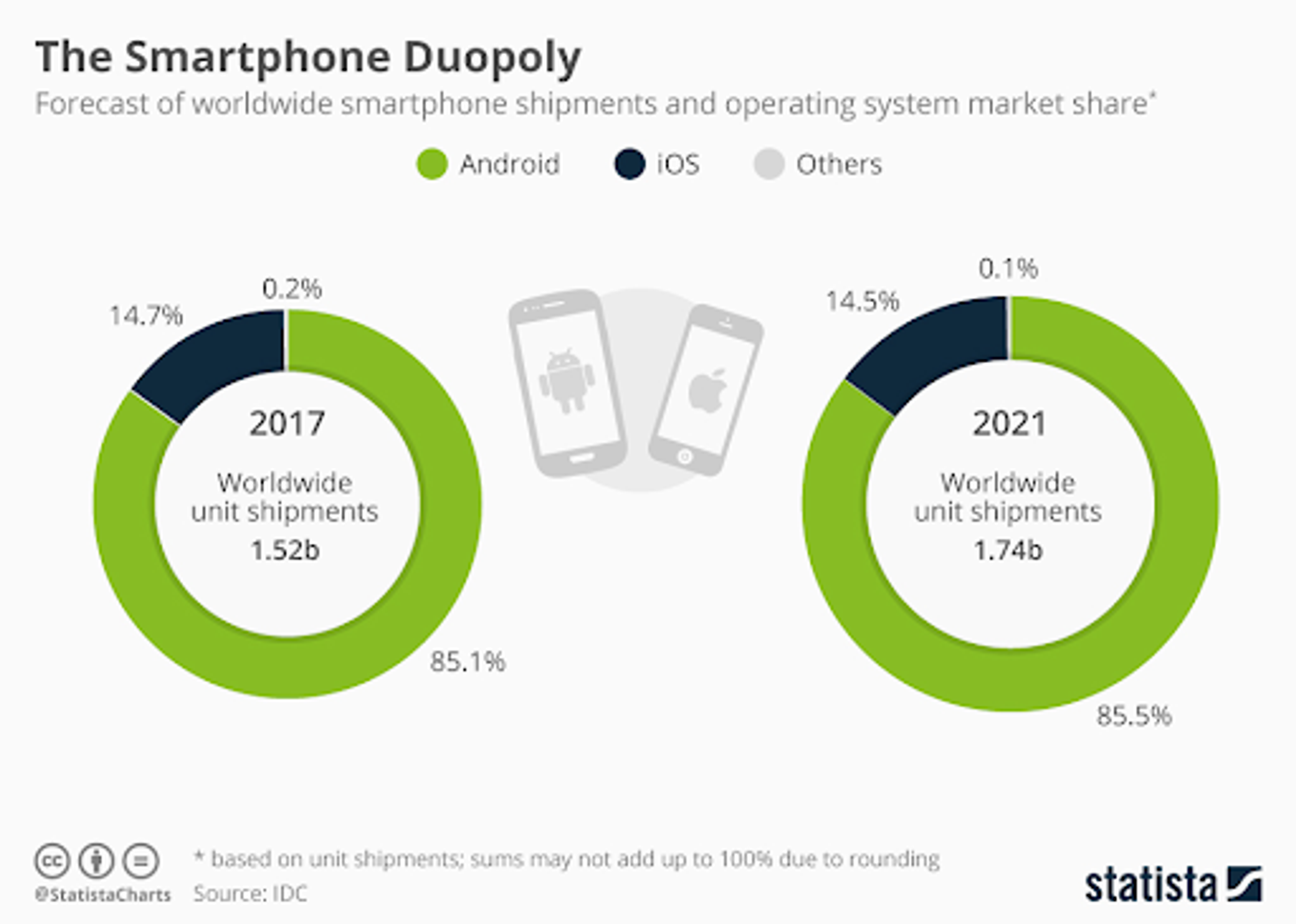
5 Steps to Verify Your Domain on Facebook
The process for domain verification is outlined below.
- Go to Business Settings, and, in the Domains Area, you will find the Brand Safety section. Or, use this link that will take you directly there: https://business.facebook.com/settings/owned-domains
- Click on the blue “Add” button.
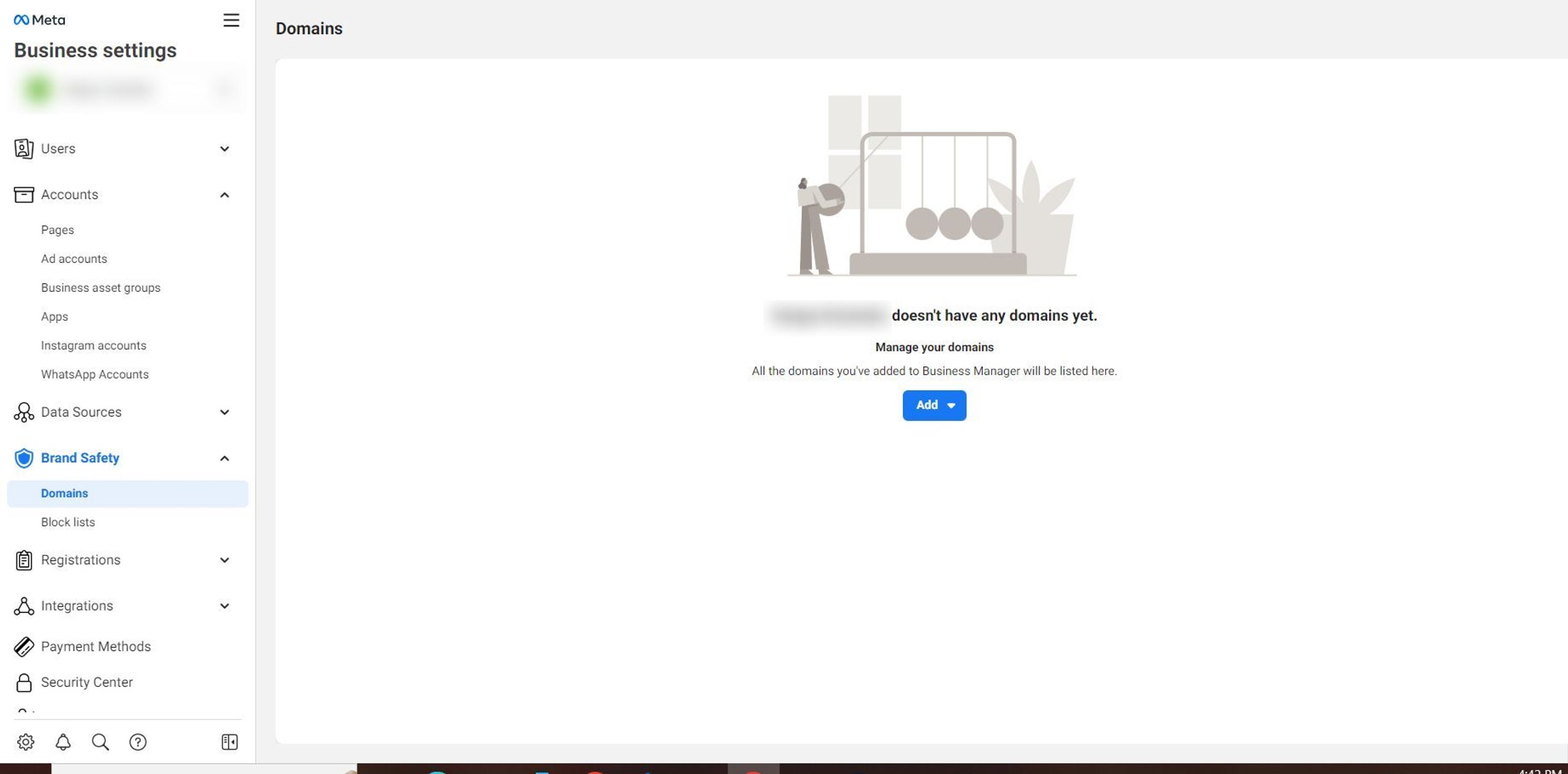
- Enter the website address in the pop-up window and click “Add Domain”. You may need to refresh the screen to see the domain in the list.

- You can choose one of three verification methods: DNS Verification, HTML File Upload, or Meta-tag Verification. You may need the help of your web developer (Hint: The Meta-tag Verification instructions are the easiest to follow).
- Once you have followed these instructions, click the green “Verify” button. If you see the red dot next to your domain turn green, you are done.
Tracking user data is not entirely impossible, even when users opt out of data tracking. Facebook has come up with a number of innovative alternatives for tracking the data of iOS users who opt out of tracking.
Strategy 1: Facebook Conversions Application Programming Interface
When Apple users don’t allow tracking, the Facebook Conversions application programming interface (API) allows you to track data directly from your server.
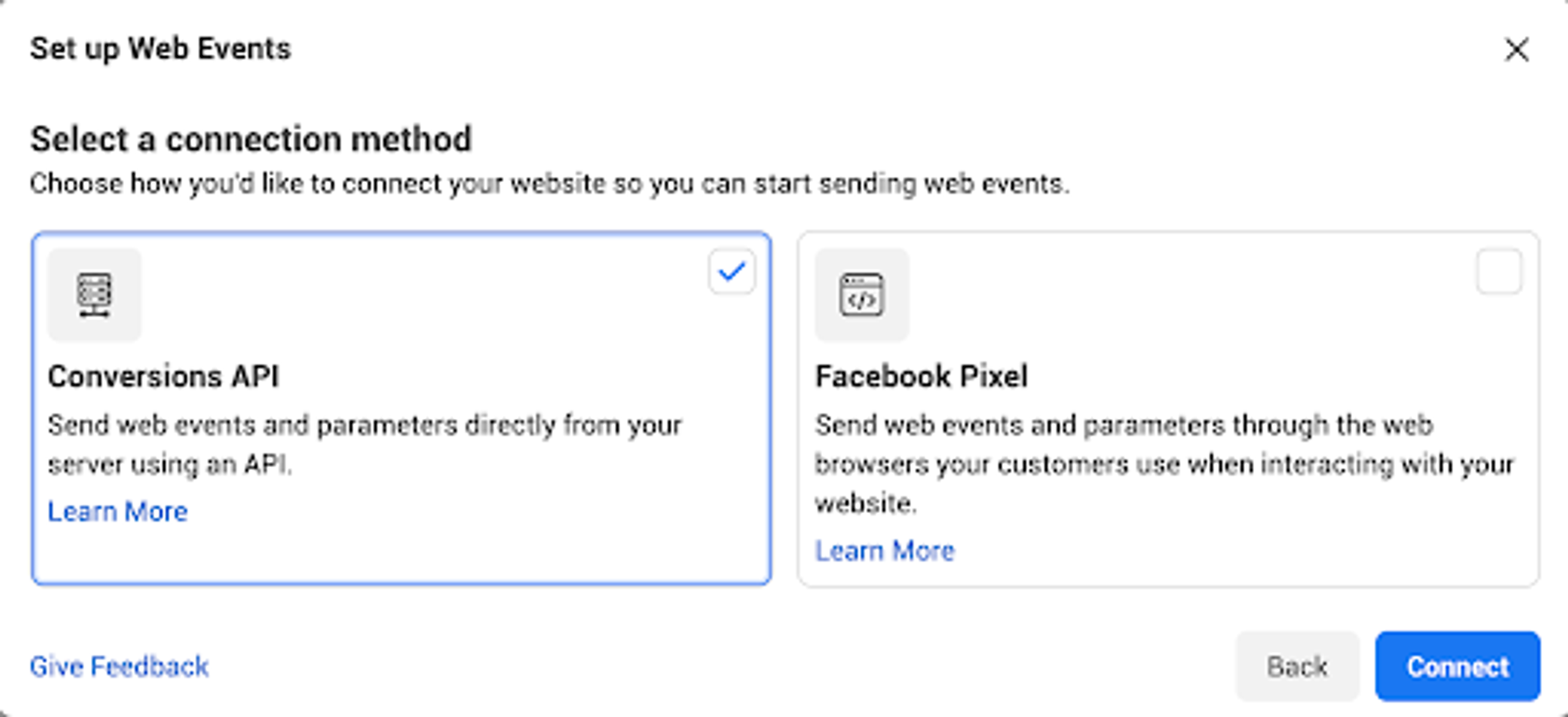
The API uses Facebook Pixel to measure ad performance. This is done by tracking events that occur between the Facebook server and your server.
The conversion API is designed to enhance Facebook Pixel so that you can track data reliably, even though Pixel is no longer as effective at gathering information.
Events that come through the API are linked with Pixel's name and are delivered in the format of Pixel events. In this manner, they can be targeted at an audience that has a high probability of clicking on them.
As such, a conversions API can help you create custom audiences and optimize your ads. Another upside to the API is that it doesn't use cookies. Having circumvented this limitation, you can track website browser actions by customers. It also works for app events and can even function offline.
At its advanced levels, it could help your measurements of conversion attribution, giving you access to more people. There are various methods of organizing your conversion APIs.
AEM Protocol
Another response to the user privacy policy of iOS devices is the AEM Protocol. This protocol was released in Events Manager.
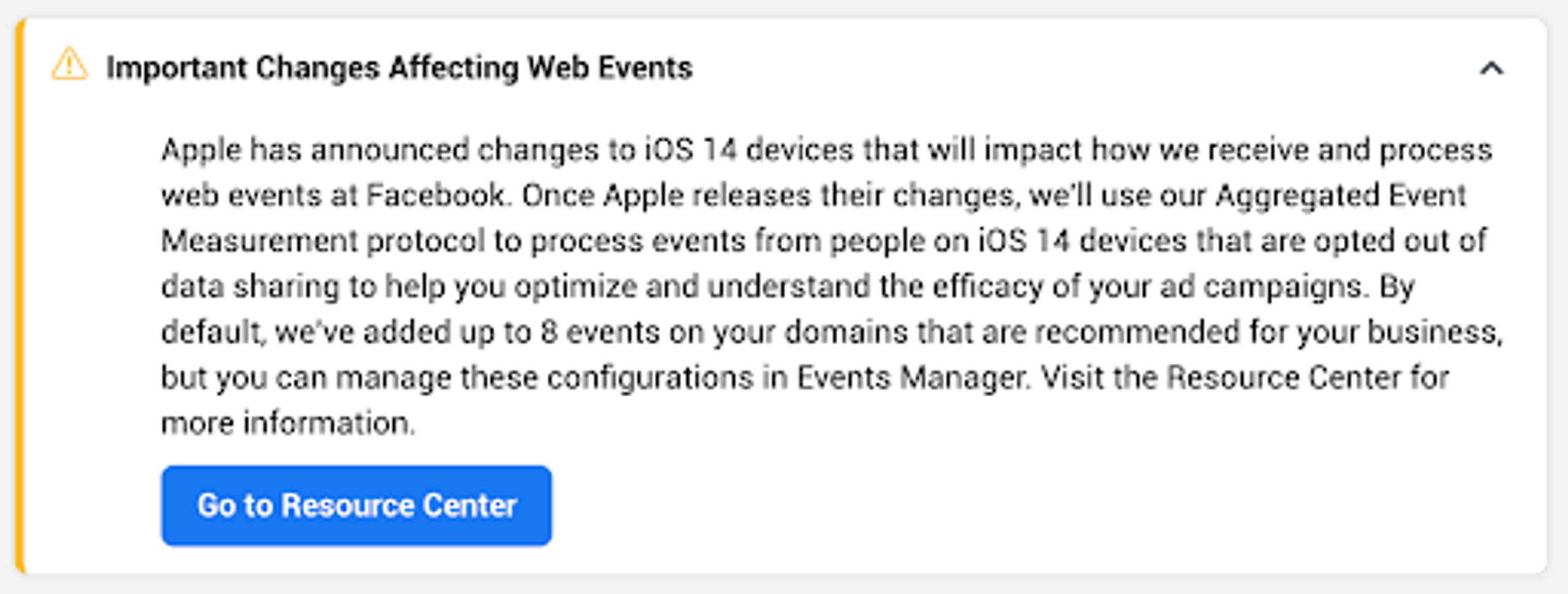
According to Facebook, it can run Pixel event conversions directly from the iOS device using a new measurement strategy. This process acts as a compromise of sorts: Your ads run without problems, and the user privacy remains intact.
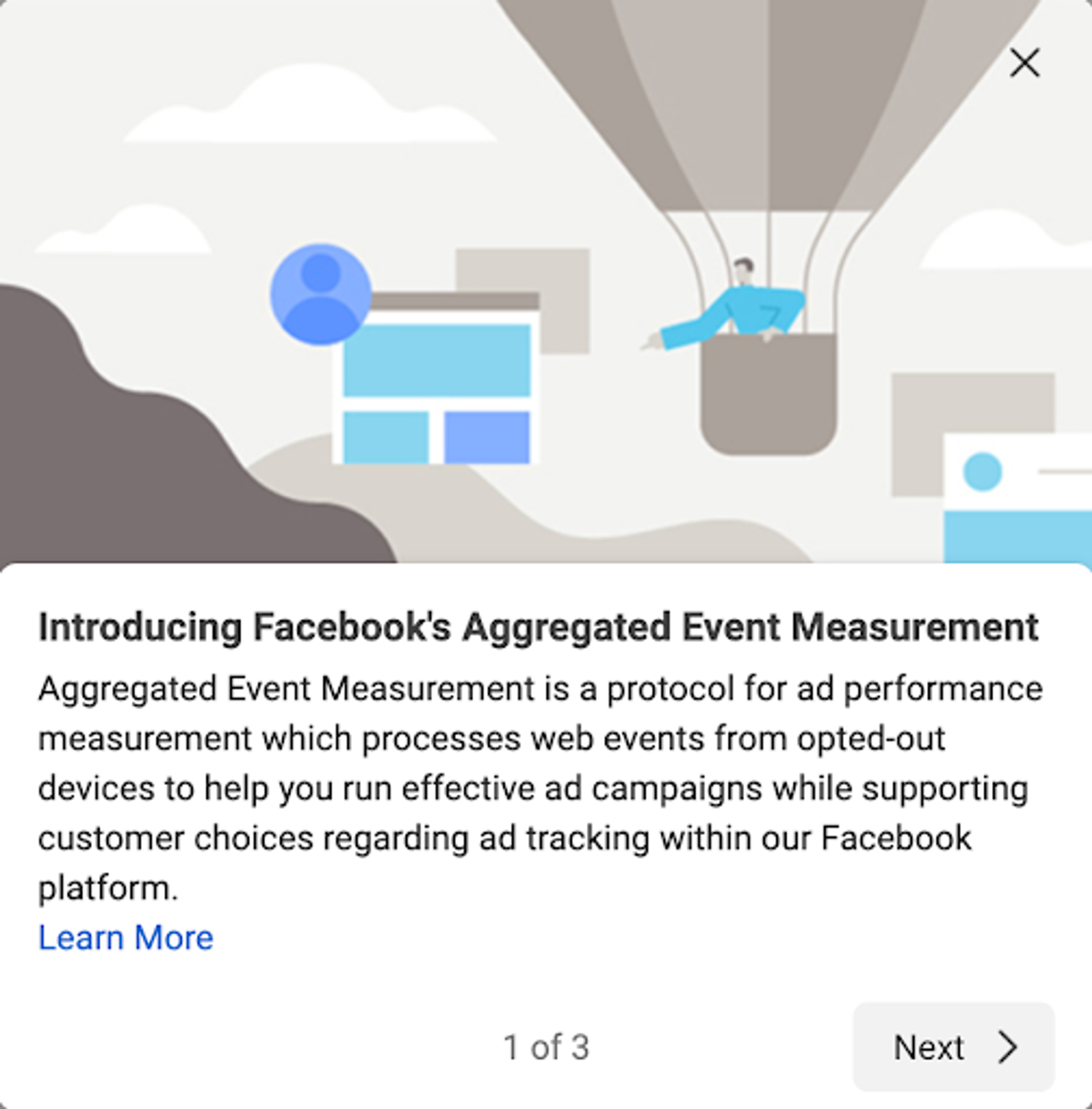
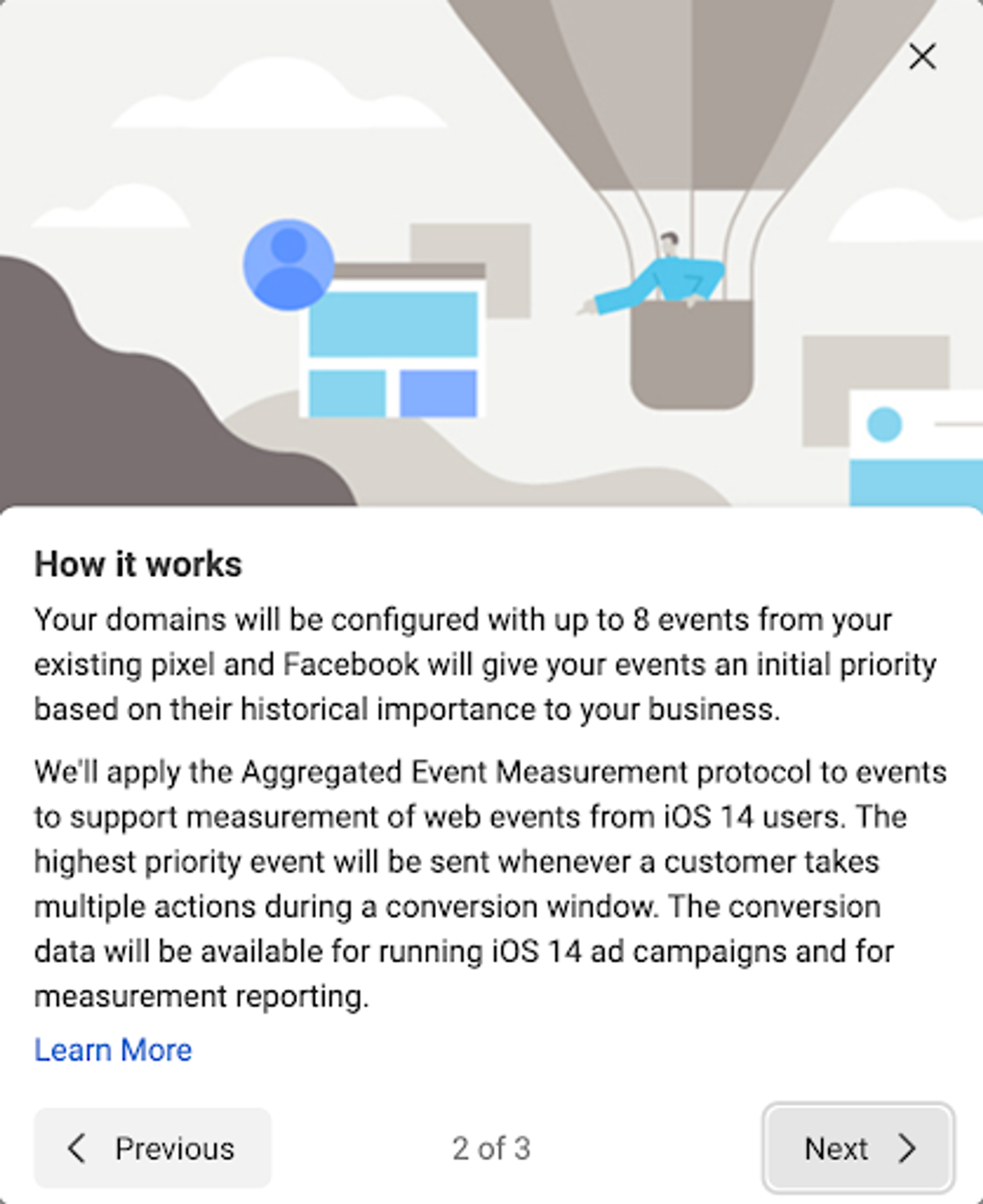
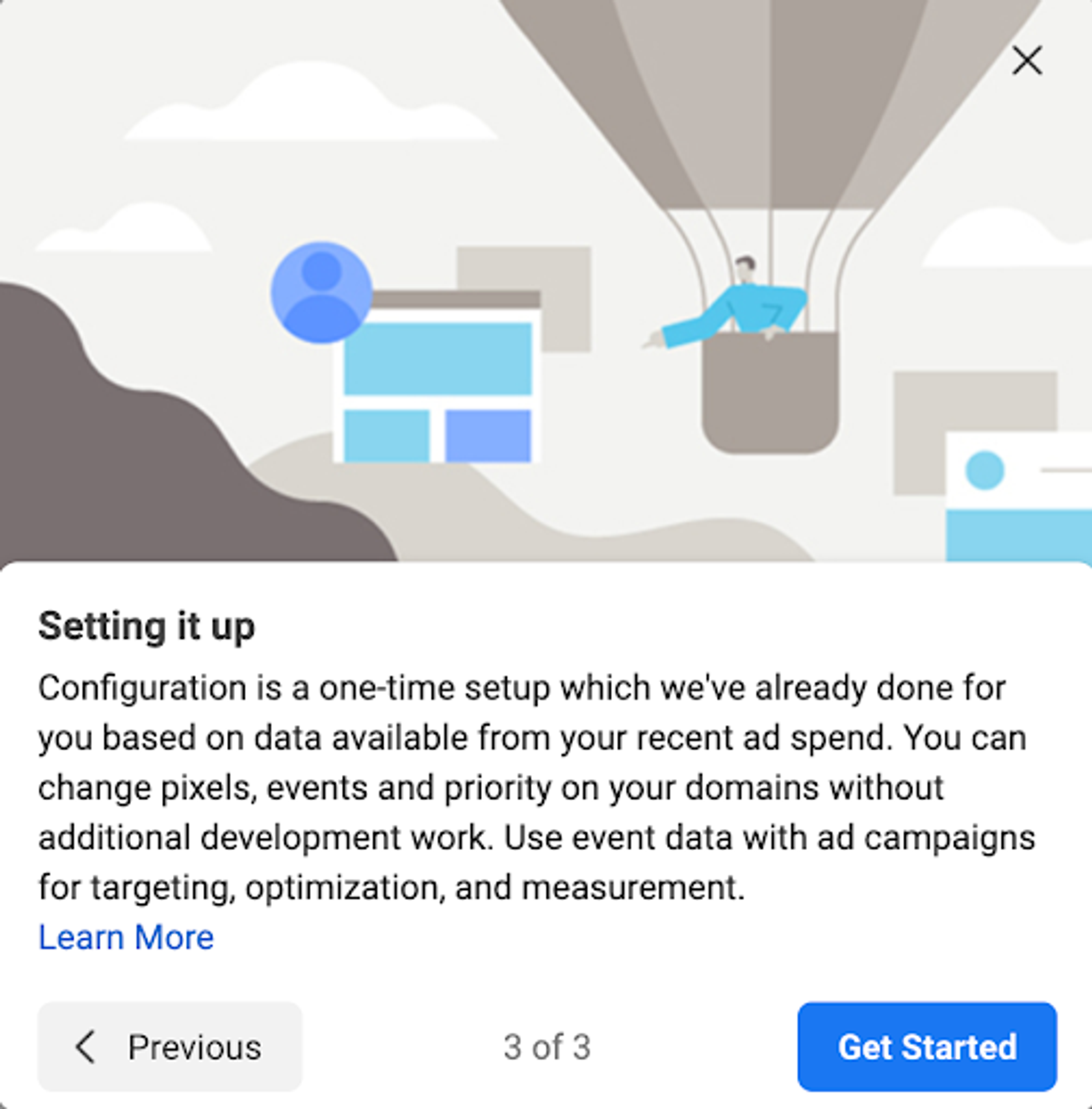
Conversion Lift
Conversion Lift is a mechanism that helps you track how much profit you made from other social media platforms or apps. This way you can really monitor the performance of your campaigns.
Strategy 2: Urchin traffic monitor Tags
Urchin traffic monitor (UTM) tags are a set of characters that are embedded in a URL. UTM tags are used to track the traffic that comes to your website from a particular platform – in this case, Facebook. UTM tags can provide an effective way to track Facebook Ads.
Let's examine each element of the UTM code so that we know how to tweak them effectively.
Source (UTM _source)
The UTM source shows you where your traffic is coming from. Be it YouTube, Instagram, Tiktok, Facebook, a specialized sales channel, or another platform. An insight into your source helps you determine which sources to focus on and which to withdraw from.
Medium (UTM _Medium)
The medium tells you the channel through which your audience has interacted with your ad. Was it through a social media platform, via mail, through a search engine results page, or via apop-up on another website?
The medium may seem similar to the UTM source, but, when you dig a little deeper, you see that there are some important differences. Let’s suppose you paid an influencer to advertise your products on YouTube, you ran a video ad on YouTube, you paid another influencer on Tiktok, and also ran an email campaign. Furthermore, let’s assume you gave the influencers customized links to your product pages, put a code to scan in the video ad on YouTube, and attached a link to the mail. Here, the difference between source and medium becomes important.
The source tells you that two thousand people came to your site from YouTube, five thousand from Tiktok, and eight thousand were attracted via mail.
The medium tells you that of the two thousand from YouTube, seven hundred landed on your page by scanning the code in the video ad, while one thousand three hundred got to your page by using the influencer's customized link.
Now, the difference should be more apparent.
UTM Campaign (UTM _Campaign)
The UTM campaign tells you which of your campaigns has drawn traffic to your site. Still sticking with our example from above, let's assume that you ran two different campaigns on YouTube; this part of the UTM tells you which campaign brought the traffic to your website.
UTM Term (UTM _Term)
If you have run some paid search ads, this part of the UTM reveals which keywords or terms have attracted the audience to your page.
How to Make UTM Codes
UTM codes are mostly created using the Google Analytics URL builder. This process uses your Google Analytics ad account to help you see what is being tracked.
Simply go to your Google account and fill in the required fields.
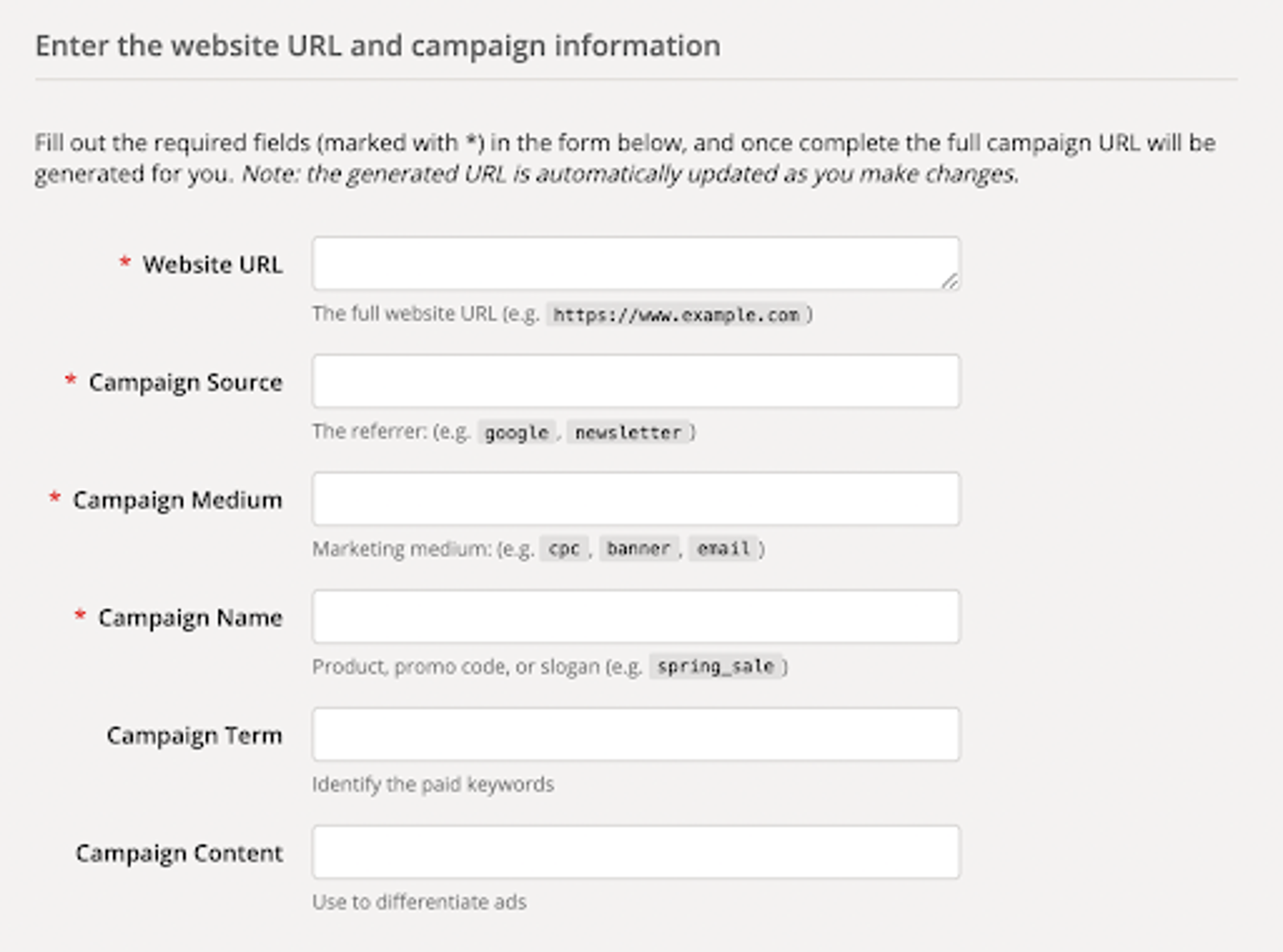
UTM Codes after iOS 14
The privacy policy on iOS 14 undoubtedly affected Facebook Pixel, but UTMs got a pass. Unlike Facebook Pixel, UTMs track the activities of a user as they relate to your ads. It simply shows you which device has interacted with your UTM, which platform the interaction has taken place on, and the ultimate results of the interaction.
With multiple UTMs, you get a fuller account of your ad’s performance. You know which platforms account for the most clicks, which campaigns obtained the most conversions, and what products have the highest sales. With this information, optimization becomes way easier.
Strategy 3: First-Party Data
The major reason for the inability of big companies like Facebook to combat Apple on this issue is that they cannot lay claim to the data involved. A simple remedy? Build your own data. First-party data is not only an effective way to mitigate the effects of iOS 14, But it is also a sustainable way to ensure you’re immune to future policies that may place further restrictions on businesses that use third-party data.
iOS 14.5: Another Story
Although it may seem like fiction, this actually happened, and at the time it occurred, there were about 2.5 million iOS users in the US. Around 94% of these people denied permission for ads and data tracking, leaving only 6% in the mix.
Across the world, 89% of iOS users opted out of data and ad tracking.
So where did all this steam come from?
The iOS 14.5 update.
If iOS 14 dug deep, then iOS 14.5 dug deeper. On the 26th of April 2021, Apple rolled out the iOS 14.5 update and turned off the Identifier For Advertisers (IDFA).
About the IDFA
IDFA is a random identifier which Apple associates with an iOS device. Advertisers can use this identifier to track activity on the user's device in a manner that permits customization of their advertisement based on the data they gather.
With IDFA, advertisers can track all events that a user triggers within an app. When the channel enables IDFA, an advertiser can also know when users interact with a campaign ad. It may also indicate if they have clicked the ad for payment or attribution.
Now that iOS 14.5 has turned off the IDFA by default, tracking this information in the case of iOS users has become increasingly difficult. However, Apple allows the user to turn on the IDFA for any given app.
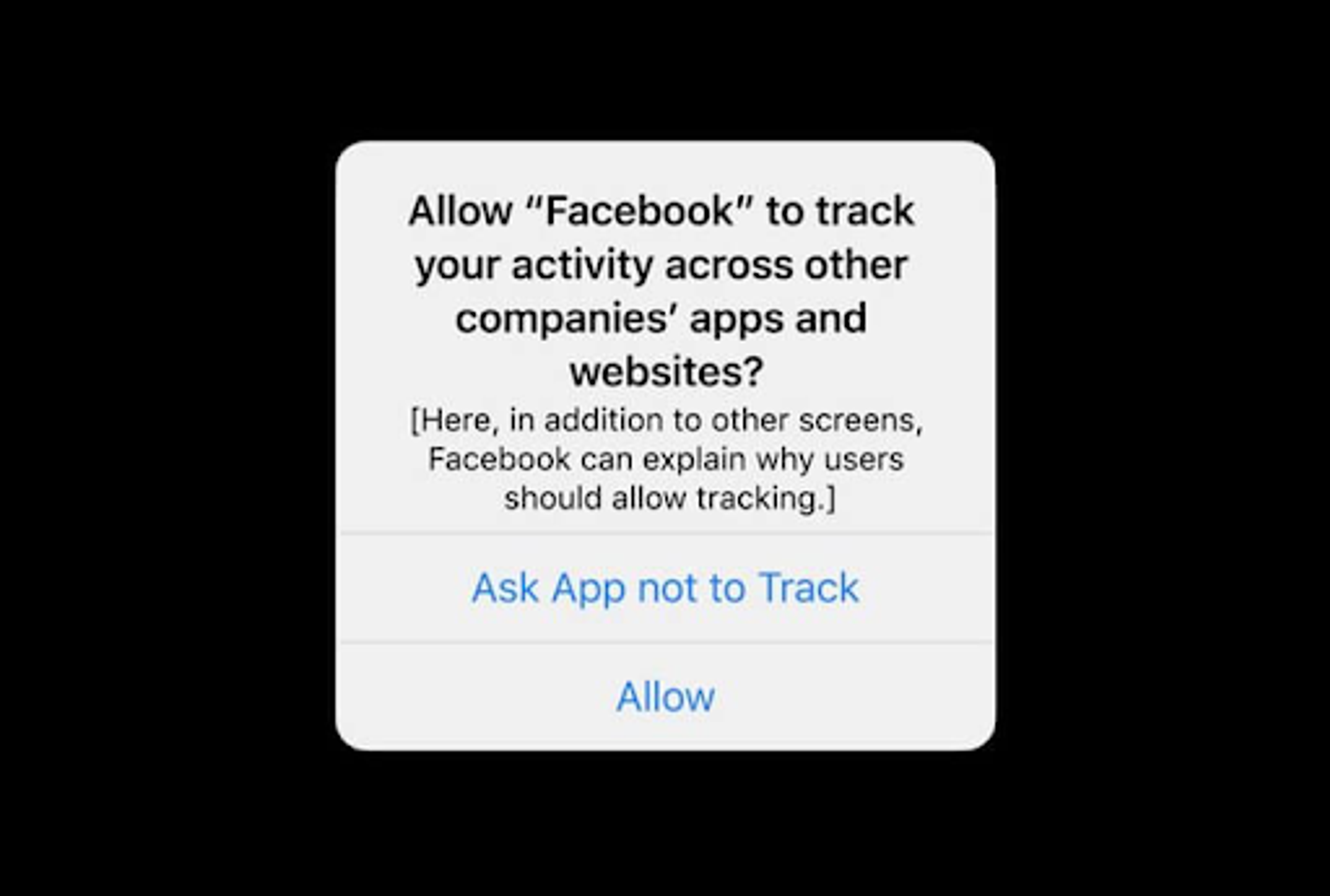
Should the user consent, you can access their data as usual. But if not, you will be limited to registering only single conversion events. Most businesses that find themselves subject to this limitation choose purchase, since it is the most important part of any advertising platform.
If you're comfortable running a single conversion event campaign, this works just fine. If not, you can either use the AEM protocol or StoreKit Ad Network (SKAdNetwork) API.
We've mentioned the AEM protocol above, so here we’ll focus on the SKAdNetwork API. The SKAdNetwork API uses a third-party publishing app to track your ads. Once the ad starts playing, the publishing app notifies the API. If it plays for three seconds, the API counts it as a view. If the user interacts with the ad, the API is able to track information on purchases, installations, quantities, and other details.
You can also explore server-side tracking and server-side tagging. This can also cushion the effects of the 14.5 update.
Benefits of Server Side Tracking
- It complies with user privacy policies.
- It doesn't share the collected data with other companies.
- Brands can store data directly on their own servers.
- Based on your settings, your cookies can last for up to twenty years. You may even build a lifetime cookie over time.
- You can improve your advertisements by feeding the data you have collected to multiple platforms.
News Update: iOS 15
iOS 15 was launched in the fall of 2021. The major data privacy feature that came with the update was related to mail data privacy. This feature hides the IP address of users as it can also be used as an identifier. Once the IP address is hidden, apps cannot determine if or when a user opened a marketing email. The system also lets users see how the apps they permitted access to their data have interacted with it. There are several other features that come with iOS 15. You can explore them here.
We hope that this article was useful in giving you insights into how the latest versions of iOS have changed the playing field in digital marketing. As you can see, even though some of the changes looked intimidating at the time of release, the industry has found ways around them. So, no matter what curveballs Apple will throw at us in their upcoming iOS releases, you can rest assured that we will find ways to deal with them, and we will tell you all about them.
We advise you not to panic! Facebook knows about all the coming changes, and they are working really hard to solve any issues that may emerge. The best thing you can do to ensure your marketing stays amazing is to enlist the help of professionals.
